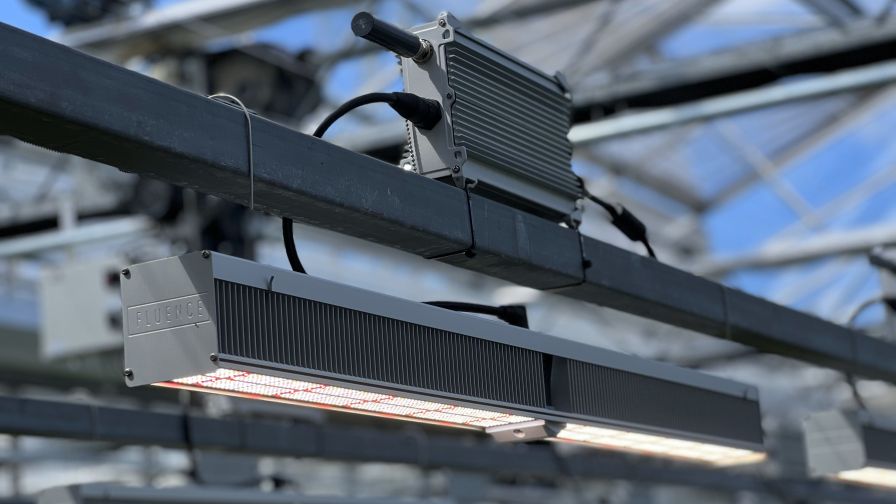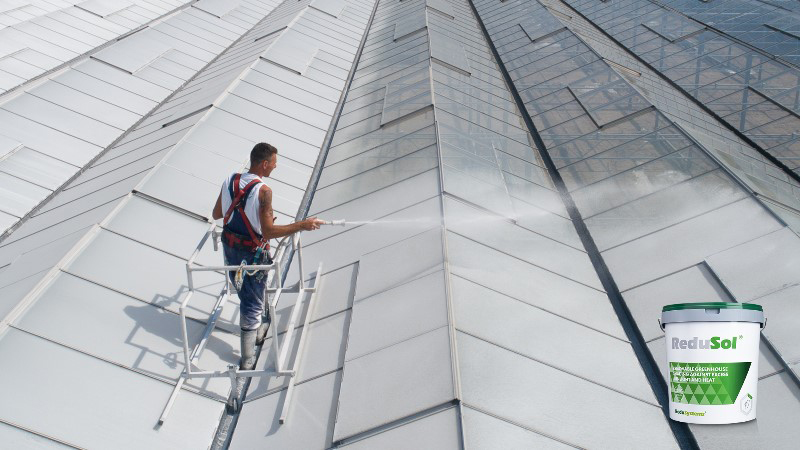How Light Intensity and Spectrum Differ When Applied to Plants

Wireless Flex Dimming | Fluence
What are the differences between ‘light intensity’ and ‘light spectrum’? Here’s a look at how they differ, how they interact with plant development, and how proper knowledge of their roles in photobiology can help benefit the health and effectiveness of your greenhouse operation.
What Is Light Intensity?
According to Fluence, light intensity is “a measure of how many photons are landing on an area per unit time.” In photobiology, this would be the total amount of light a plant receives, which in turn affects its rate of photosynthesis.
However, the human eye can only process intensity by a perceived level of brightness. Additionally, this is made all the more difficult by the fact that certain colors, such as green and yellow, appear much brighter than others, such as blue and red, due to how our eyes interact with the visible spectrum.
Therefore, in horticultural applications, wavelengths in the Photosynthetically Active Radiation (PAR) spectrum are equally weighted, with light intensity measured as “micromoles of photons per meter squared per second.”
Due to a greater amount of intensity evoking a greater plant response, yield is the primary metric considered. Many growers apply a high level of light intensity to increase the rate of photosynthesis in their crops and maximize production yield.
What Is Light Spectrum?
A light spectrum is the combination of electromagnetic radiation wavelengths that create light and give it its properties, such as color, according to HubbleSite. For those we can see, these are part of the visible spectrum.
Horticultural lighting is often described using the word spectrum, not colors, because of human error. Many visible wavelength combinations might appear similar if visually described by a shade or tone of color. That’s simply because even within the visible spectrum of light available to the human eye, we’re unable to note subtle differences in light variations. For example, a subject could be presented with two different ‘red’ lights that are perceived to be identical in color to the human eye but are actually quite different regarding wavelength combinations and spectra.
Precision is important. This is because specific light wavelengths induce specific responses in plant development. The small differences in light variations communicate crucial information to the plant, such as “optimally driving photosynthetic processes, communicating to the plant if it is in direct sunlight or shade to induce stretch or compaction, and inducing or repressing secondary metabolism,” according to Fluence.
How Are Light Intensity and Spectrum Measured?
Light intensity is measured by a quantum sensor, which measures photons in micromoles. While initially only designed to measure sunlight, newer quantum sensors can better parse and report wavelengths from colored (blue and red) LED lighting.
Light spectrum is measured by a spectroradiometer, which measures the number of photons present at each individual wavelength.
A spectroradiometer is a much better choice, compared to a quantum sensor, when conducting research in the field of photobiology, but is much more expensive. Meanwhile, for most growing operations, a quantum sensor is the more suitable option.
How Do Light Intensity and Spectrum Interact?
Applications of light intensity and light spectrum interact in how they positively and negatively contribute toward plant development. As Fluence puts it, “A spectrum that is optimal for plant development at a relatively low intensity may not be optimal for plant development at a high intensity, and vice versa.”
A plant’s rate of photosynthetic saturation is also heavily affected by the interplay of intensity and spectra. For some crops, “red photons are more likely to push a plant to photosynthetic saturation at a higher intensity than green photons.”
Lastly, LED lighting, as previously mentioned in how it can cause problems for quantum sensor readings, is both a new solution and problem to the equation. Here, it offers a positive, as certain spectrum diodes output more photons despite keeping the same input of electricity. While this is heavily dependent on the type of crop, this increased level of capacity for certain spectrums can lead to huge variations in operation costs when using LEDs.
In the end, to both maximize production and minimize costs, it’s important to properly optimize the use of light intensity and spectrum for your greenhouse operation.










